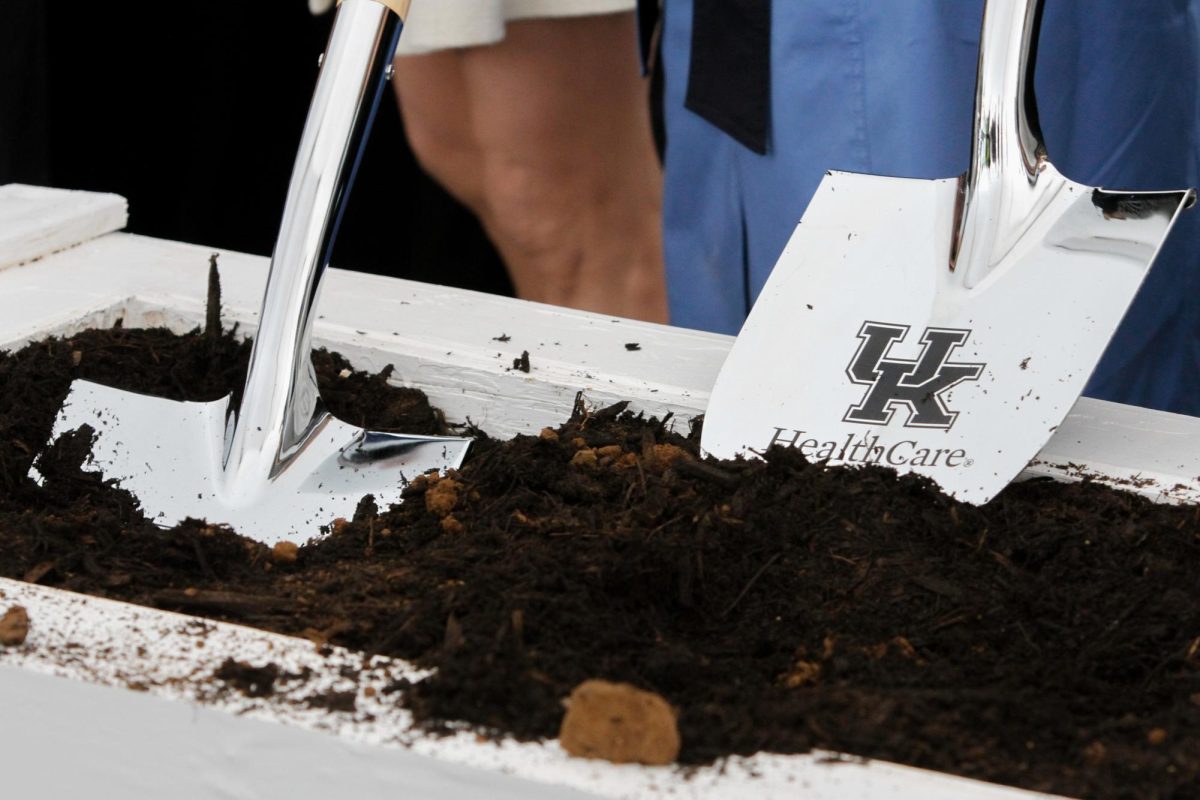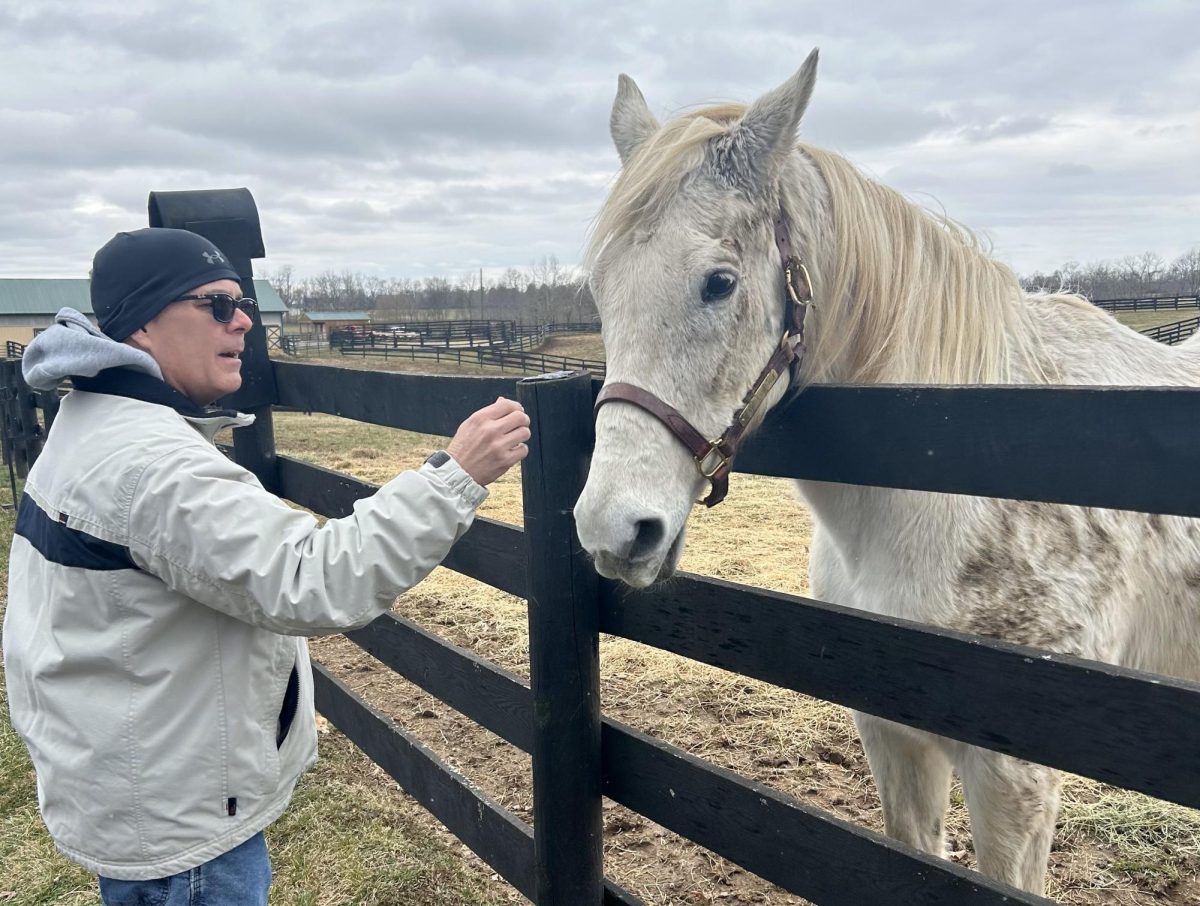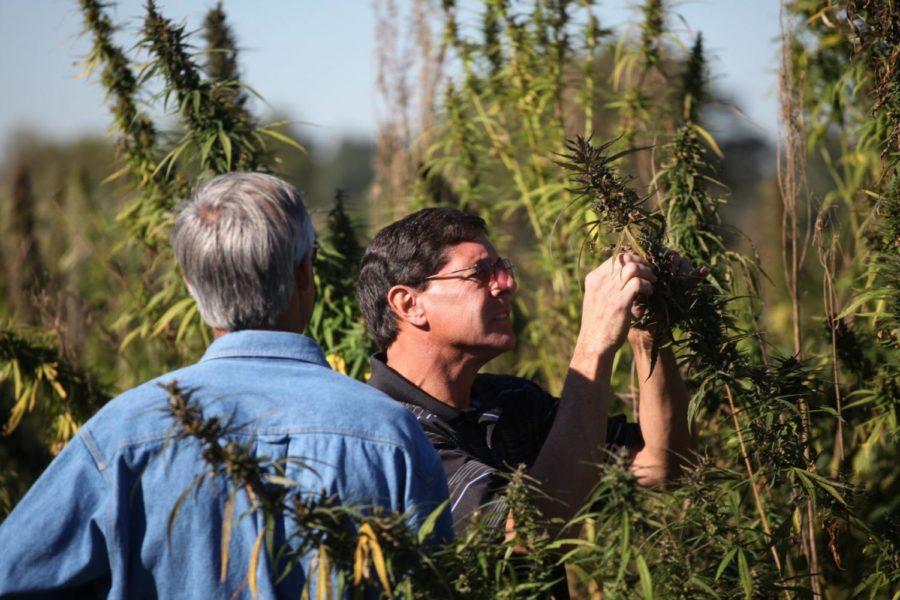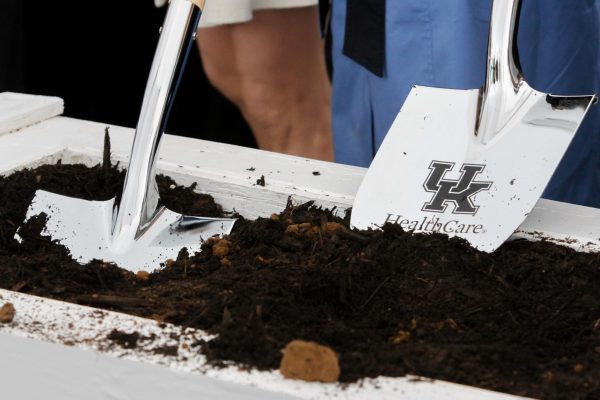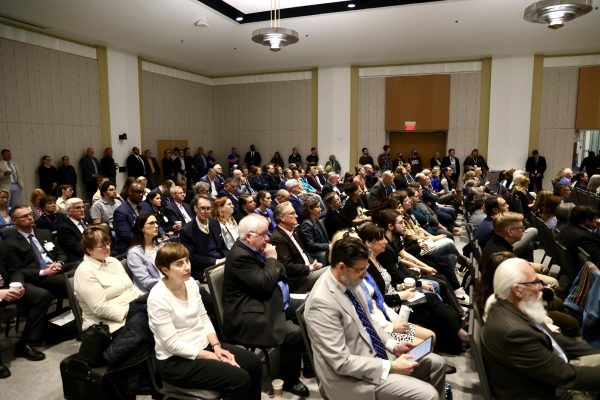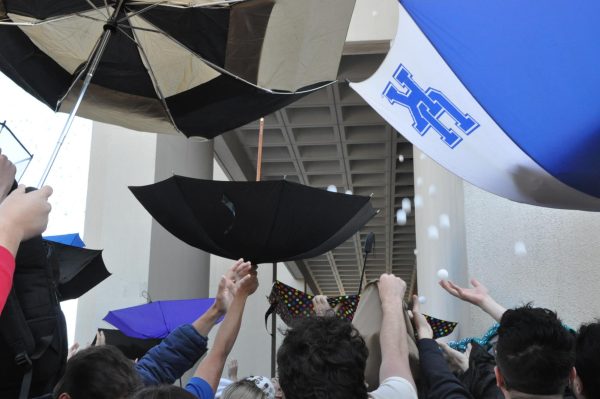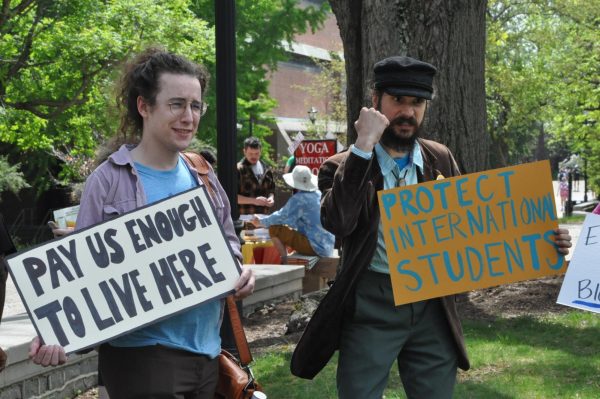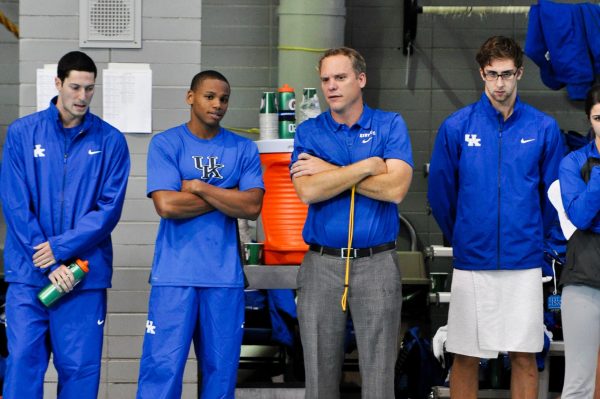UK’s research farm harvests state’s 1st hemp crop in decades
Bill Polyniak, left, and Dave Hendrick, right, look at the hemp plant at the University of Kentucky hemp harvest at Spindletop Research Farm in Lexington, Ky., on Tuesday, September 23, 2014. Polyniak and Hendrick work in CBD research. File Photo
September 24, 2014
By Morgan Eads
At about 9 a.m., industrial hemp was legally harvested in Kentucky for the first time in decades, and some hope that this marks the beginnings of job growth and economic boosts for the state.
Terry Sutton, 70, was one of the many farmers who gathered in the cool air to see what UK researchers believe could be a potential booming industry in Kentucky.
Before the nearly 10-foot-tall green stalks were cut and placed in rows, Sutton moved slowly among the plants, touching, smelling and even tasting.
Terry Sutton and his wife, Missy, own two small farms in Franklin County. Terry Sutton had cultivated 10 acres in hopes of being able to plant hemp this season, he said. But since hemp still remains illegal, he says he will continue to wait.
“I don’t know what the problem is,” Missy Sutton said. “It would be such a cash crop for Kentucky.”
UK agrologist David Williams echoed the possibilities hemp could open up for the state when he addressed a group of farmers crowding around him near the tractor after the harvest was done.
Williams said hemp is not an extremely complex crop, and that farmers would probably be able to grow and harvest it with equipment they already have for harvesting hay.
“Farmers would pick right up on this,” he said.
He added that there is a very real possibility that, if the hemp industry took off in Kentucky, more jobs could be brought to the state outside of farmers.
The processing plants required to take the harvested and baled stalks and turn them into workable products generally need to be within 50 miles of where the farms, he said. This could bring the processing jobs to the state in addition to the benefits for farmers.
Williams said that he and the others working on the project hope to expand their research next season.
“It’s been very exciting and it’s been a lot of fun,” Williams said. “I’d be lying if I told you otherwise.”

